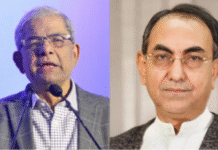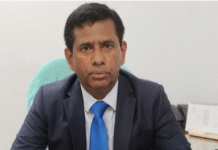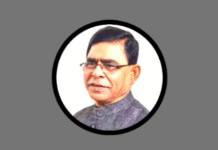Govt challenged by megaproject deadlines
Meeting megaproject deadlines such as that of Padma Bridge or the Metro Rail, turns out to be a serious challenge for the government due to inadequate resource allocation, lack of skills and delays in land acquisition.
Inflated costs and delays in completion of what government terms as ‘fast track’ projects, eventually impact on the overall utility of these projects.
Among 10 megaprojects, only one, the Maheshkhali Floating LNG terminal, has been completed so far. Padma Bridge construction has made comparatively more progress than the other projects, followed by the metro rail project. Apart from these three, the seven other projects have been left almost untouched.
However, the construction of Padma Bridge, metro rail and the Maheshkhali LNG terminal required increased costs and extended time, affecting their ultimate utilities.
In seven of the 10 projects, the estimated allocation in the Annual Development Programme (ADP) is Taka 288.5 billion. However, expenditure so far has only been Tk 99.79 billion, that is, only 35 per cent of the total allocation.
So far, one-third of the projects have not been completed. The government will have to face major challenges to meet the deadlines. In addition, there are concerns and criticism at home and abroad about a number of the fast track projects. Some of them are at environmental risks including the Rooppur nuclear power plant and Rampal coal-fired power plant, according to experts. It will be another challenge for the government to address these concerns and risks.
Experts pointed out a number of reasons behind the delays and increased costs of the projects. These include lack of expertise of the project officials, inadequate allocations in the ADP, delay in implementing the project after completing the tender process, the Holey Artisan attack and its aftermath, and work slowdown due to technical problems.
Another major criticism is the inflation of project costs on various excuses.
It will not be possible to achieve 10 per cent of the total GDP growth, if these megaprojects are not completed soon, said member of the Planning Commission’s General Economics Department (GED), Shamsul Alam.
‘The priority of these projects never decreased for the government, but projects are never expected to be complete on time in Bangladesh. The deadline of the project implementation may vary a bit, that’s it,’ he added.
More progress on Padma BridgeWhen the Padma Bridge project was undertaken in 2009, a railway track was not part of it, but was added later on. It has been two or three years since the changes in the design. Also, the World Bank withdrew its financing from the Padma Bridge project over allegations of corruption. Later, the government decided to construct Padma Bridge with its own funds. So the main work actually started in December 2015. Then again, the design of 14 pillars of the bridge was changed due to the depth of the river in 2017.
In 2007, ECNEC approved this project at a cost of Tk 101.61 billion. It now stands Tk 301.93 billion after increasing the costs time and again. By January, 63 per cent of the project has been implemented, which is the highest among all other priority projects of the government. However, the project was inaugurated in 2018 and was to be completed by December of this year. But the bridge authorities said that this might not be possible.
There is another project of railway links in Padma Bridge. Initiatives have been taken to construct 172 kilometres of railways to connect the capital city Dhaka with the south-western part of the country, especially Khulna. The progress in construction is only 23.47 per cent in the last two and a half years after the project plan was passed in 2016. It took two and a half years to acquire land while the process of acquiring land in Dhaka, Narayanganj, Munshiganj, Shariatpur, Madaripur and Faridpur is still underway.
Metro Rail visibleThe Metro rail project was undertaken in 2012. It was said that the 20 kilometre metro rail will be built from Uttara to Mirpur by 2024. Meanwhile it was expected to that the railway will begin operating from Uttara to Agargaon in 2019. However, the work did not go according to plan. The construction of the pillars from Uttara to Agargaon is almost done. Span installations have been started in some parts of Uttara. On the other hand, the work in Agargaon, Farmgate, Karwan Bazar, Banglamotor and Shahbagh has only begun recently.
Rooppur project progress 14 per centCosts for Rooppur Nuclear Power Plant were estimated at Tk 1130.93 billion in which Russia provided almost Tk 900 billion. Only 14 per cent of the work has been done in two and half a years. Meanwhile, environmentalists are still staunchly opposed to the the project.
Holey Artisan affected MatarbariThe Matarbari power plant began in 2014. The 1,200 MW power plant was to be completed by 2023, but only 21 per cent of the project was done in four and a half years.
After the Holey Artisan militant attack in Gulshan in 2016, foreign engineers left Bangladesh and that disrupted the project work.
Cox’s Bazar railway line yet to startThe estimated cost of the Cox’s Bazar railway line project was 18.52 billion taka when the project plan was passed in 2010 and it was to be completed by 2013. The railway tracks from Dohazari to Cox’s Bazar via Ramu eyed another increase in expenditure estimated to be Tk 180.34 billion.
Environment risks of Rampal power plantThe Bangladesh-India Friendship Super Thermal Power Project in Rampal upazila of Bagerhat is known as the Rampal coal-fired power plant. Bangladesh Power Development Board (BPDB) and India’s National Thermal Power Company (NTPC) are jointly implementing the project called Bangladesh India Moitri Power Company Limited. Indian EXIM Bank offered more than three-fourths of the loan amount of Tk 160 billion to the project. The project was scheduled to begin production in the first phase by 2018 after it was launched in 2009. However, this has not happened as yet.
The construction of the main power station is underway. And the land development, construction of the office and walls has been completed.
Payra sea portThe project to build Payra deep seaport was undertaken in 2015 and was scheduled to end by June 2020. More than half the work is yet to be finished. However, the limited operations of the port have started, using the previous infrastructure.
Experts fear that there will be no major navigability for large vessels even if the project is completed soon. The average navigability at Payra port is not more than four metres where it has to be at least 18 metres for large vessels to anchor in a port. As a result, the river must be dredged all year round to keep the port operational, which is quite expensive.
Other projectsOther fast track projects include the deep seaport at Sonadia in Cox’s Bazar. Japan’s Pacific Consultant International (PCI) has completed the technical and economic study for the port construction. It was initially the plan to construct this under Public-Private Partnership (PPP), but now it has been decided to take this up as a government to government (G2G) project. China, India, UK and other countries showed interest in the project and that all the progress made so far.
The Maheshkhali Floating Terminal is functioning. The US company Excelerate Energy has connected the entire floating terminal to the main gas grid under the build and operate system. It will get returns on its investment from the terminal rental revenue. So this project is more or less complete. However, the terminal old and its longevity is only 17 years. So its long-term efficacy remains a question.
Centre for Policy Dialogue (CPD) distinguished fellow Mostafizur Rahman feels that there is a lack of competent officials for the management and supervision of megaprojects. He told Prothom Alo, megaprojects involve various parties and work, but there are no facilities to coordinate all this. And much time is spent on land acquisition. When a project’s time is extended, costs go up and this pushes down rates of return.
*This report originally published in Prothom Alo print edition has been rewritten in English by Farjana Liakat









